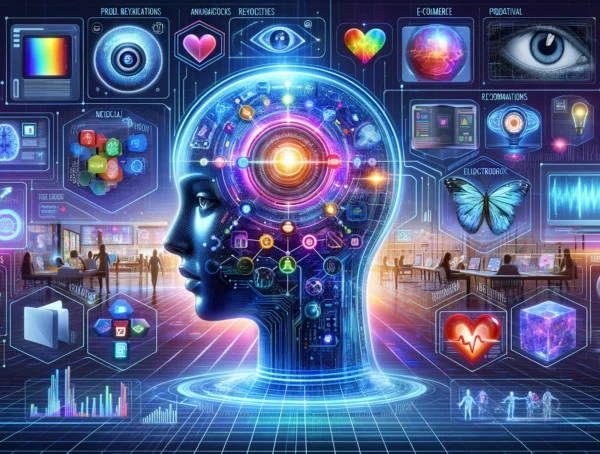Generative Artificial Intelligence (AI) represents a transformative leap in technology, synonymous with immense potential and undeniable implications. This revolutionary facet of AI, utilizing intricate algorithms to generate new data from existing datasets, is increasingly permeating various sectors – from entertainment and media, to advertising. However, with great potential comes great responsibility. This contemplative analysis delves into the spectrum of issues that could stem from the proliferation of Generative AI, including biases, misinformation, and malicious misuse, while also probing into sustainable proposals for managing these probable risks.
Understanding Generative AI
Understanding Generative AI
Generative AI is an emerging subset of artificial intelligence that allows computers to generate data similar to the ones it’s trained on. Like an imaginative painter or a prolific writer, these AI algorithms can churn out novel content – text, images, music, or even product designs – based on learned patterns. These AI models code information in a latent space and generate new instances by sampling and decoding from this space. Famous examples include DeepMind’s AlphaGo, which taught itself to play the game of Go to championship standards, and OpenAI’s GPT-3 language model, capable of generating human-like text.
Concern About Biases
However, generative AI is not without its challenges. A significant concern is the potential for bias in generated outputs, often reflecting the biases in the training data. For instance, facial recognition AI trained predominantly on Caucasian faces may struggle to accurately identify people of other ethnicities, or the language generation models might generate sexist or racist language if the text, it’s trained on, carries these biases.
Misinformation and Malicious Use
Another critical issue is the role such AI could play in spreading misinformation. An AI that can generate lifelike text or realistic images can be exploited to create ‘deepfake’ videos, misleading news articles, or fake social media posts. Generative AI could also be harnessed maliciously, creating spam emails or phishing messages that are hard to distinguish from legitimate correspondence.
Proposed Mitigation Strategies
- Bias Auditing: Regularly auditing the generative AI models for bias and fine-tuning the algorithms to minimize biased outputs. Incorporating this as a standard part of the AI development process can help ensure that bias is identified and addressed.
- Diverse Training Data: Using racially and sexually diverse training data to better represent all aspects of humanity and reduce bias in generated outputs.
- Transparency and Openness: Being transparent about the use of generative AI and its limitations can reduce the risk of malicious use and misinformation.
- Regulations and Guidelines: Establishing clear regulations and guidelines for developers and users on ethical AI practices, including how generative AI models may be used for creating content.
- Watermarking AI Generated Content: Imposing requirements for clear marking or watermarking of content generated by AI, to help audiences distinguish between human-generated and AI-generated content and thus guard against misinformation or deepfakes.
- Educating The Public: Spreading awareness and educating the general public about generative AI, its capabilities, and how to identify content produced by such technologies can further mitigate the risk of misinformation and malicious use.
Introduction
As we embrace the considerable potential benefits that Generative AI brings across various sectors, it’s crucial that we simultaneously scrutinize the potential risks involved. It becomes imperative to encompass elements such as Bias auditing, regulatory guidelines, transparency, public awareness, and utilization of diverse data sets in order to devise comprehensive solutions.

Potential Biases in Generative AI
Understanding Biases in Generative AI
A specific machine learning subset, generative AI, has seen considerable momentum in its evolution recently. It now boasts the capability to produce synthetic data encompassing text, visuals, and even music. But, its rapid growth has also revealed several challenges. Prime among these concerns is the propensity for biases, a scenario where certain individuals or groups can experience systematic and unfair discrimination from an AI system based on race, gender, or cultural factors.
Misinformation and Generative AI
Another risk associated with generative AI is the potential for misinformation. This is due to the AI’s ability to create or alter digital content, which can be used for manipulating truths or fabricating stories. High-profile instances, such as DeepFakes, which are AI-generated videos that convincingly depict real individuals saying or doing things they never did, have sparked widespread concern about the ease with which disinformation can now be created and spread.
Malicious Use of Generative AI
The power of generative AI can also be exploited for malicious intents, such as vandalism, criminal activity, or undermining public trust. For example, this technology can be used to generate realistic phishing emails, impersonate voices for fake identity verification, or create fake news content for propaganda purposes.
Proposals for Mitigating the Risks
To address these issues, numerous solutions are being proposed and explored. One approach is to ensure that the training data sets are balanced and representative of the diversity in the real world. Efforts must be made to mitigate biases in the data collection stage and make the process transparent.
Another proposal is to develop robust methods for detecting and defending against misuse of AI-generated content. This includes researching more effective tools for identifying DeepFakes and other forms of AI-generated misinformation.
Ethical guidelines and regulations are also crucial to prevent misuse. Policymakers and tech companies need to work together to create a regulatory environment that encourages innovation while also protecting individuals and society from potential harm.
Despite the challenges, it’s also important to acknowledge the immense potential and positive impacts of generative AI. It offers a powerful tool for scientists, artists, and other professionals to create novel content, simulate complex systems, and perform tasks more efficiently. For instance, in healthcare, generative AI has been used to generate new molecules for drug discovery.
While generative AI technology holds great promise in various sectors, it’s essential to acknowledge the potential risks and challenges it presents such as inherent biases, dissemination of misinformation, and malicious use. However, potential solutions such as balanced data sets, efficient detection systems, regulations and ethical guidelines, along with increased public awareness about the scope and limitations of AI, could provide effective countermeasures.

Misinformation Risks and Generative AI
The Concern of Misinformation and Generative AI
As generative AI continues to evolve, it has gained remarkable proficiency in creating high-quality synthetic media including text, imagery, and video content. This advancement has heralded a new era of potential in industries like entertainment, advertising, and communication. However, it has concurrently opened a Pandora’s box of ethical and societal dilemmas, chief among them being the potential misuse of AI in propagating misinformation or ‘fake news’.
Perhaps the most concerning example of this is DeepFakes. These are synthetic videos produced using AI, so realistic that it’s often challenging for an untrained eye to distinguish them from the real footage. DeepFakes can create substantial disruption, from manipulating public sentiment and instigating violence, to causing reputational damage to individuals and organizations.
Balancing Pros and Cons
Generative AI has positive applications, such as image upscaling, restoring old photos, impersonating voices for aids like Siri or Alexa, and generating realistic animations for video games or movies. However, these benefits come with their set of drawbacks. Misinformation risks and malicious uses are high on this list. In fact, false information spreads six times faster than truthful news and reaches far more people, per a study conducted by MIT Sloan. That potency is magnified when combined with DeepFakes, potentially impacting political landscapes and public perception on a mass scale.
Concerns With Bias
A major issue in AI development is bias, which occurs when an AI system exhibits prejudice or partiality derived from the dataset it was trained on. If the training data contains biases, the AI system is likely to reproduce or even amplify such biases. This bias risk can contribute to the misinformation challenge and can result in unfair treatment, false reasoning, or unjust decisions.
Proposals for Mitigating Risks
To combat these risks, transparency in AI systems is crucial, which involves providing understandable explanations about how AI systems work and their potential impact. Research and development of more robust detection technologies for identifying synthetic media can also help combat misinformation risks posed by DeepFakes.
Furthermore, governments, policy-makers, and technologists should take steps to enforce stricter regulations on AI systems’ development and use. The AI research community should strive to recognize and mitigate biases in training data and ensure that AI systems promote fairness and inclusivity.
Lastly, as AI becomes progressively influential in our lives, it is vital to educate the public about the possibilities of AI-generated content. The more informed the public is about these technologies, the less susceptible they will be to manipulation.
Conclusion
It’s critical to understand that Artificial Intelligence (AI) – like any technology – is a tool with the potential for extreme good and potential harm balanced on a knife’s edge. Therefore, evaluating its value stems largely from how responsibly it is used. Mitigating any risks associated with Generative AI, a form of this technology with transformative power, requires a shared effort. Researchers, societies, and policy implementers all have a role to play in striking a delicate balance between reaping its benefits and limiting potential harm.

Malicious Use of Generative AI
Malicious Potential of Generative AI
Generative AI stands for artificial intelligence systems with an ability to generate content from scratch through training on existing data. Despite the significant potential they hold for innovation, these systems can also give rise to substantial risks when harnessed for nefarious reasons. One such danger is the creation of deepfakes – counterfeit videos and images so convincing that distinguishing them from real is challenging. Misuse of deepfakes can lead to the spreading of mistruths, skewing political discourse, and possibilities of identity theft and blackmail.
AI and Misinformation
Another area of concern is the potential use of generative AI in disseminating misinformation. Given its capacity to produce vast amounts of targeted content, AI can supercharge existing efforts to spread false information. Whether through AI-created deepfakes or text generation, there’s fear that false information could shape public opinion, spark tensions, and even incite violence.
Biases in Generative AI
As AI models learn from the data they are trained on, biases present in the training data can and do lead to biased outcomes. This risk isn’t limited to controversial or ethically fraught uses; even AI systems with benign applications could propagate harmful biases if not carefully managed, potentially leading to inequitable or discriminatory outcomes.
Potential for Malicious Use
Given the increasing sophistication of generative AI, there are serious concerns about its use in cyberattacks. AI could be used to tailor phishing attacks to individual targets, creating highly personalized and therefore more convincing fake messages. Additionally, sophisticated deepfake technology could potentially be harnessed for fraud, creating fake audio ‘proof’ to authenticate fraudulent transactions, or to create false video footage.
Proposals for Mitigating the Risks
Realizing the potential dangers, experts are proposing several measures for mitigating these risks. These range from developing better tools to detect falsified AI-generated content, to implementing stricter regulations governing the use of AI technology. Rigorously testing AI systems for biases and taking steps to correct them is also critical. Public awareness and education about the potential risks and the telltale signs of AI-generated content can also serve as effective safeguards.
A Comprehensive Analysis
Generative AI possesses immense potential that goes beyond simplifying content creation. It promotes cost-effectiveness and efficiency across a broad range of sectors, including education, entertainment, and advertising. However, like any potent technology, the focus should not solely be on either its rejection or unrestrained acceptance. Instead, the emphasis must be on conscientious and accountable utilization.

Mitigating the Risks of Generative AI
Formulating a Moral Framework for Generative AI
Mitigating the risks associated with AI begins with the establishment of a moral blueprint. Such a framework assists in AI’s construction, implantation, and observation to ensure that transparency, neutrality and privacy are maintained at all times. The framework may also delineate the boundaries for AI’s operation whilst addressing significant questions such as the areas of exclusion for AI and the necessary constraints to curb its misuse. By integrating these ethical stipulations into AI systems, decision-making guidelines are defined, and uncrossable ethical parameters are established.
Anti-bias Training Data in Generative AI
Including anti-bias training data in AI models can help reduce inherent prejudices that might enter AI systems. AI models learn from the data they’re given – and they could potentially replicate and amplify biases present in this data, especially those related to race, gender, age, or socioeconomic status. Therefore, it’s crucial for AI developers to use comprehensive, diverse, and unbiased data during the AI’s training phases. This process could help ensure that the AI does not discriminate or make biased predictions. Furthermore, frequent auditing and iterations of the AI can help to identify and rectify any discovered biases.
Dealing with Misinformation Risks in Generative AI
Generative AI systems have the potential to unintentionally or deliberately spread misinformation, by feeding on biased or inaccurate data and making predictions or creating content based on it. To mitigate this risk, generative AI systems must utilize credible, verified data sources and be continuously monitored for accuracy of their output. Developers can also incorporate features to flag and review potential misinformation. Regulations mandating transparency about the use of AI, especially in areas like news generation or political content, can also aid in combating the spread of misinformation.
Legislation and Guidelines for Safe AI Usage
The emerging complexity and potential risks associated with generative AI technology necessitate corresponding legislation and guidelines. Legislations could regulate the development and use of AI, set standards for data security and privacy, and enforce penalties for misuse. Guidelines can help establish best practices, encourage transparency and accountability, and stimulate regular audits of AI systems. In addition, specialized bodies could oversee the development and deployment of AI, ensuring compliance with established rules and maintaining public trust.
Balancing Innovation and Risk in Generative AI
While it is necessary to address the potential risks associated with generative AI, it’s also crucial not to stifle innovation. These advanced systems can be incredibly beneficial by automating tasks, improving efficiencies, and opening new avenues for exploration. Therefore, the approach towards risk management shouldn’t aim to excessively limit the technology, but rather create a responsible and ethical framework for its use. Proper education and awareness about AI and its potential pitfalls, combined with the outlined precautions, can ensure that we reap the benefits of generative AI without falling victim to its potential downsides.
Evolution of AI Risk Mitigation Strategies
Mitigation strategies for generative AI risks will likely evolve as the technology advances. As AI develops, new potential risks could emerge, requiring ongoing monitoring, adjustment of existing guidelines, and formation of new strategies as necessary. Public input into AI ethics, regular reassessment of the impact of AI, and adaptation of regulations, are also essential. This would ensure that the strategies remain relevant and effective in mitigating AI risks while fostering AI’s potential to contribute positively to society.

Ultimately, as Generative AI continues to evolve and integrate into our daily lives, it becomes of paramount importance that we foresee and actively manage possible threats. This includes devising solid ethical frameworks, incorporating anti-bias elements in training data, and enforcing appropriate legislation to regulate AI usage. The goal is not to stifle innovation, but to guide it towards a trajectory that values human interest, understands cultural implications, and maintains a vigilant guard against potential misuse. Undeniably, the future of Generative AI holds promise and peril. Steering it gracefully would mandate a fine balance between exploiting its potential advantages and mitigating its inherent risks.
More from Blog
Artificial Intelligence: Introducing Its Basic in a Nutshell
What is artificial intelligence?A primer on AI, its definition, and its significance.Artificial intelligence (AI) is a branch of computer science …
Skyrocket Affiliate Outreach With AI – Scale Your Biz Now
As the digital landscape evolves, businesses must adapt to remain competitive and foster growth. One aspect that is seeing significant …
AI Discovery Journey: Exploring The World of Artificial Intelligence
Introduction to Generative AIArtificial Intelligence has rapidly transformed from science fiction to a central part of our technological reality. Among …
AI Image Generation: The Ultimate Guide to Creating Stunning AI Art [2024]
AI image generation has revolutionized how we create visual content. In this comprehensive guide, we'll explore Envato's AI ImageGen tool, …
Discover GPT-40 Vision: The Future of AI Innovation
Artificial intelligence is evolving rapidly. OpenAI's latest innovation, GPT-40 Vision, aims to revolutionize our interaction with technology. This AI model …
AI Discovery Journey GPT: How to Effortlessly Explore It?
IntroductionThe "AI Discovery Journey GPT" is an exceptional tool that caters to a wide range of users, from beginners to …
















